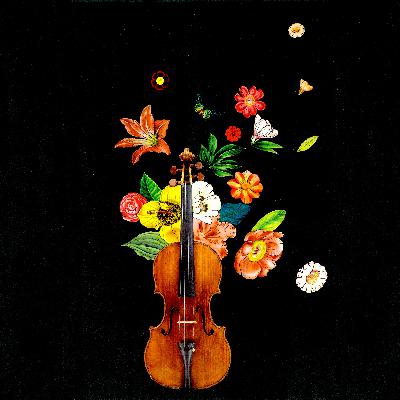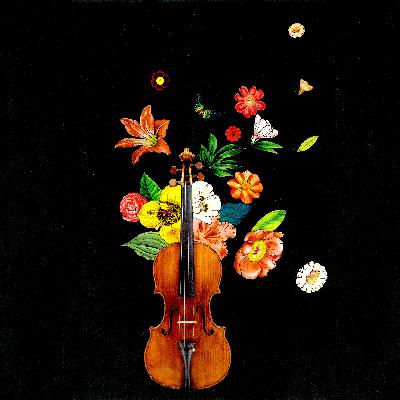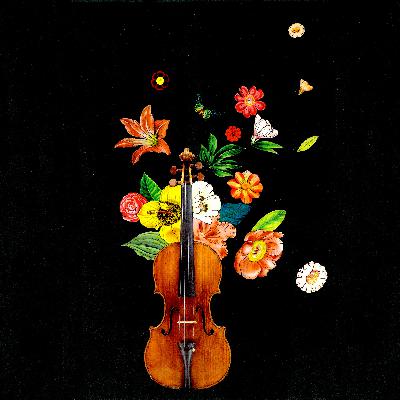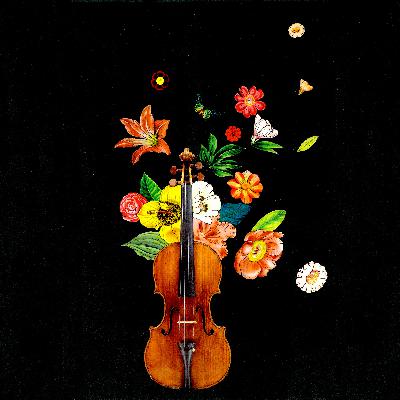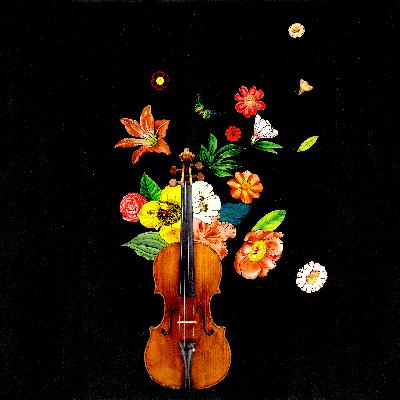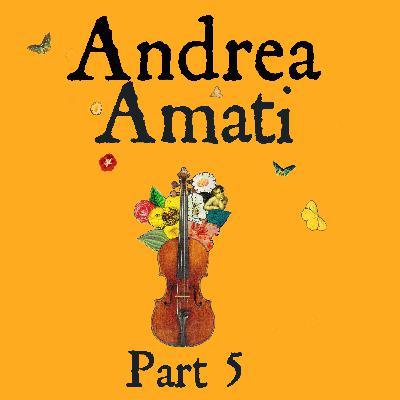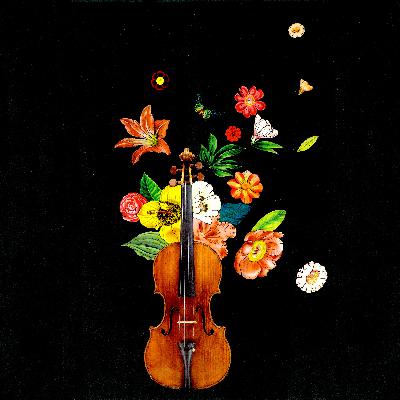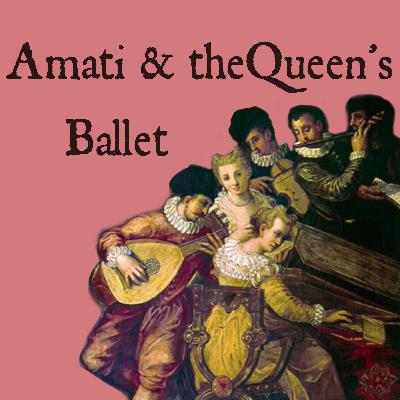Ep 14 Maggini, the real thing... or a copy, with Florian Leonhard and Benjamin Hebbert
Description
In the history of violin making Maggini is a must. I speak to two violin experts Florian Leonhard and Benjamin Hebbert about Giovannin Paolo Maggini. Maggini's Brescian style of making violins was very distinctive and an incredible amount of copies of this luthiers work has been copied in the intervening 400 years, the two violin makers I am talking to will shed light on why and how this came about and we will give you some tips on how to recognise a Maggini instrument and make one yourself....perhaps.
Transcript
Hello and welcome to the Violin Chronicles, a podcast in which I, Linda Lespets, will attempt to bring to life the story surrounding famous, infamous, or just not very well known, but interesting violin makers of history. I'm a violin maker and restorer. I graduated from the French Violin Making School some years ago now, and I currently live and work in Sydney with my husband Antoine, who is also a violin maker and graduate of the French school, l'Ecole Nationale de Luthierie, Mircourt. As well as being a luthier, I've always been intrigued with the history of instruments I work with, and in particular, the lives of those who made them. So often, when we look back at history, I know that I have a tendency to look at just one aspect. But here, my aim is to join up the puzzle pieces and have a look at an altogether fascinating picture. So join me as I wade through tales not only of fame, famine, and war, but also of love. Artistic genius. Revolutionary craftsmanship, determination, cunning and bravery that all have their part to play in the history of the violin.
Welcome back to the story of Giovanni Paolo Maggini. In the first episode about this maker, I have briefly covered his life story. We don't know all that much about this maker during his lifetime, but his influence and style is definitely long lived. And the sheer number of copies of his instruments that have been made in the intervening 400 years is simply staggering. And so in this episode, I will be talking to two experts about why and how Maggini instruments were and are such hot stuff.
To begin with, In these conversations, the mention of the Hills book comes up quite a lot. Let me quickly explain why. W. E. Hills and Sons, if you don't know, was one of the great English violin workshops in London, only to be rivalled by J& A Beares. A bit like what Batman is to Superman. Big players. Did you, did you know, by the way, that Bruce Wayne, Batman's alter ego, is actually the owner of the Daily Planet newspaper, who employs Clark Kent, making Batman technically Superman's boss. I find this fascinating because this is kind of what happens in the story of the Beares and Hills companies, but I digress.
The Hills Workshop was founded by William Ebsworth Hill, 1871 to 1895. He was the son, grandson, and great grandson of violin makers. But when he founded W. E. Hills and Sons, he really took things to the next level. The man's energy was boundless. Under William's direction was the company's workshop, of course, that was producing new instruments and bow makers making bows. They would also deal in older instruments and were well known for their quality restorations. They had a line of accessories as the workshop continued to be run by his sons, and these included rosins, cleaning polish, chin rests, shoulder rests, bridges, instrument cases, strings, little tuning pipes, peg paste, if your pegs got stuck, the pegs themselves, music stands, and the list goes on.
Whatever product pertaining to the violin you could possibly think of, the Hills made sure there was a Hills version of it. If this sounds like a handful, then hold on to your seats, because not only was W. E. Hill a violin maker and musician, he was also interested in photography and astronomy. And let's not forget his family, because it is Hill and Sons, so he obviously had children. Nine, in fact, somewhere along the line. But to really prove oneself as an authority in the field, what better way to do it than to write a book? And to make a splash, the first one was on the wonderful Brescian maker, Gio Paolo Maggini, published in 1892. And this is the book that we often refer to as the Hill's book in our discussions about Maggini.
To make this book, research was made from archives and really to date, this book still stands as one of the only works documenting exclusively the life and work of this maker. Even though research has continued over the years, this is still a book makers keep coming back to. And so now you know a bit about the Hill's book, or more precisely, it's called The Life and Work of Giovanni Paolo Maggini, the author of which is a woman named Margaret Higgins, who is fascinating in her own right.
I spoke to Florian Leonhardt, who is a London based violin maker, dealer, restorer, expert, and owner of Florian Leonhardt Fine Violins. We spoke about Brescia, the city Maggini lived and worked in. Brescia was a, was a city that, had a very rich musical life. It was completely devastated by the invasion of, was it the French?
The French? Yeah, the French sorry about the French so they invaded, and ransack the city completely. And then the venitians took it back, took control over it and then there was another battle. It was ransacked again. And, you know, it was really, really destroyed. But Brescia didn't benefit from a big rich duke that, that would kind of, control the cultural life of the city. Unlike most other big cities, like Milan and Florence and Rome. But even Venice had a lot of wealthy people who kind of had demands on their cultural life. And Brescia, interestingly, had a big, probably middle class, intellectually interested, that furthered music making in a big way. And particularly, instrumental music making, or opera, that is not just singers and so on, but had lots of different musical instruments. And these Brescian makers during Gasparo Da Salo's time, particularly in his earlier time, were cittern makers, they made the plucked instruments, as well.
So they were busy doing those things as well, but actually you had in Brescia, you had already the word Violin for Violin Maker. And Gasparo Da Salo's time before it's a Pellegrino. Zanetto's, Micheli's, family time. You already had the, term violino or violini maker, but we don't know exactly what that thing looked like, whether that was actually the violin. Because, you know, something that looked a bit, uh, better than a Rebek and different to a, to a viol, maybe it was called that.
It's kind of on the way. It's on the way, yeah.
I'm Ben Hebbert, I've got a workshop in Oxford. Occasionally I sell violins. I do a lot of writing about them and a lot of research and a little bit of expertise as well.
Okay. And where, where can we find your, um, where can we find your writings?
My writings? I've got, uh, violinsandviolinists. com is my blog.
And, uh, it sort of everywhere else, occasionally in the Strad magazine and things like that. Chapters of books. Things.
Nuggets of wisdom.
Something like that. Um. Page fillers.
All right. So today I wanted to talk about, uh, Maggini. Actually, I did have a, I did have a thought, about, the difference between Cremonies and Brescian instruments. And that was, we looked at, you, you said how, was it Virgil that went to school? In Cremona. And Cremona was well known for its schools and it had a very, educated, merchant class.
And I was wondering if it wasn't for the education level in Cremona and the fact that an artisan like amati could have a Renaissance education, would, the violin have the shape that it does today if it wasn't for school?
Oh, yes and no. Uh, I think it's the answer. When we look at, when we look at Amati, we're looking at something which is architecturally wonderful, and it works. But if you go backwards in time, so there's some amazing frescoes in Ferrara by a guy called Cordenzio of Ferrara, and, they show musical instruments, bowed instruments of every single, you know, imaginable shape, and including some things which may actually be purposefully wrong, because they're being held by angels, but, within those there's one or two instruments which are violin like, and at the end of the day, what, you know, what is a violin shape?
Well, it's, it's the biggest, it's the biggest amount of surface area and volume in order to make a good sound. And yet, at the point where the bow crosses the strings, it's got to be narrow enough that the bow can touch each of the strings individually without you know, having a bit of a road crash.
So, the violin as we know it, you know, might have appeared around 1500. There could well be instruments which are even older than that, which are quite like the violin. In fact, 14th, uh, 13th century, uh, precursor of the violin tend to have a sort of jellybean kind of shape to them, again with this narrowing at that point.
So, the shape is in the ether one way or another, but just the shape in terms of you know, what an instrument has to be. But I think, you know, one of the things that an architect can do, whether we're talking about a violin or a shed, is, you know, there's a whole difference between sort of sticking some sticks in the ground and sticking a roof on it and architecturally designing a shed. And I think that's kind of where someone like Amati comes in. He says, with all of this Renaissance knowledge that I've got, this thing is already working. It's already a perfectly good thing for doing what it does. But I'm going to, understanding the necessities of it, the string length to get pitch the, site, the, volume of it. In order to get the sort of sound, the narrowness and all of this, I’m going to make a beautiful architectural version of what already exists. I mean, I'm thinking of the difference between the Bressian violi

